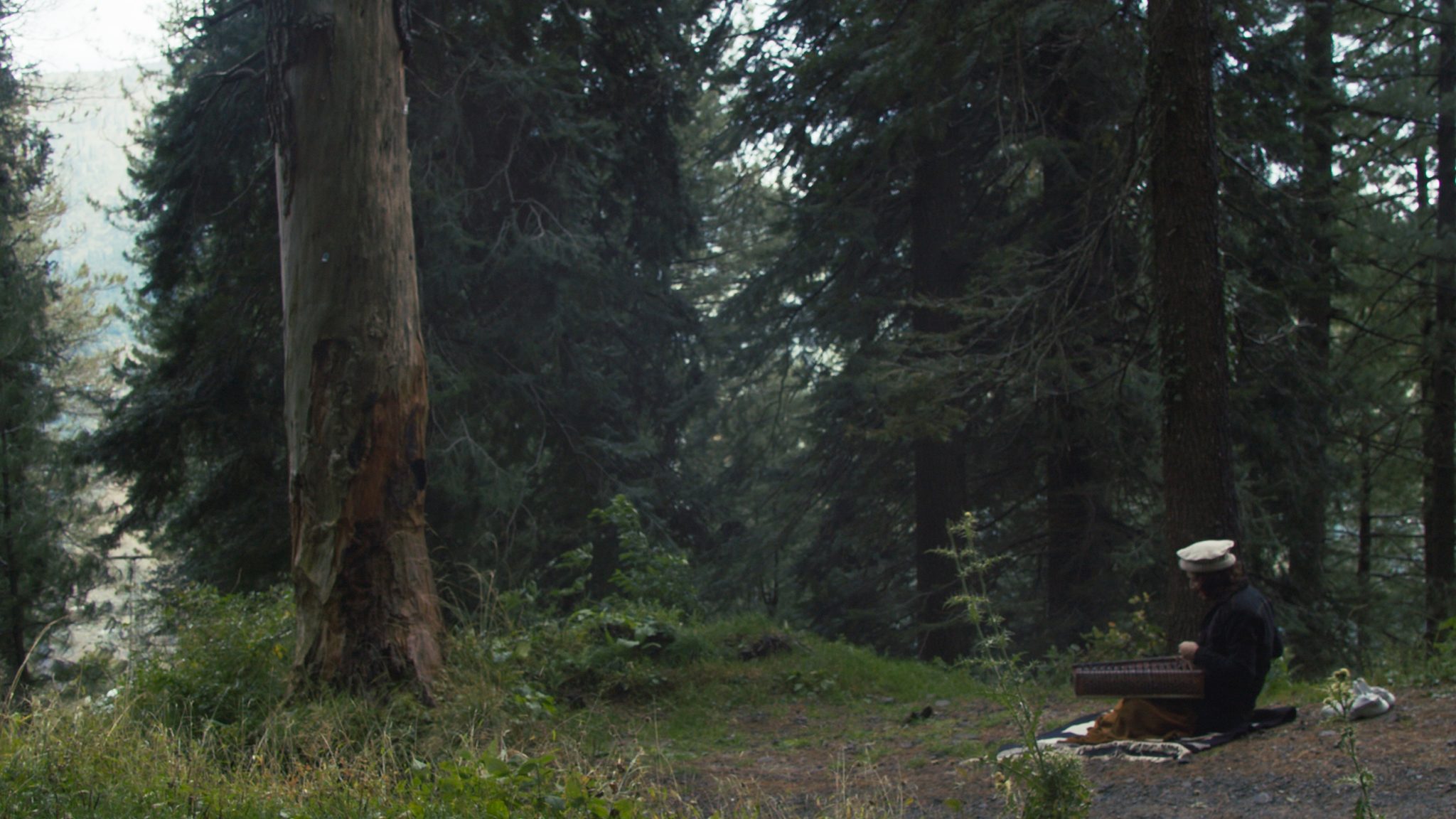In works by the filmmaker Hira Nabi, nonhuman voices direct humans towards a radical shared consciousness
What might be the appropriate language in which to talk to trees? That’s the subject Pakistani filmmaker Hira Nabi and I are currently discussing. The context is her three-channel video Wild Encounters (2023), which is part of a bigger project, How to Love a Tree, launched in 2019 and manifested in various media (among them, prints, cyanotypes, performances, musical concerts and audio), that explores the relationship between people and landscapes in her homeland. Trees of any sort, however, aren’t present as we’re discussing them. It’s just the two of us, talking behind their backs, out of time, out of place on a video call. Not, of course, that it’s totally clear which part of a tree might be its ‘back’ in any case.
Wild Encounters was filmed in the misty pine forests around Murree, roughly 30km northeast of Islamabad. Murree was originally established as a hill station by the British during the mid-nineteenth century (and their occupation of what was then ‘India’) as a sanatorium and a refuge from the oppressive summer heat of the Punjab plains. Nabi’s videowork aims at bringing audiences closer to the forest, to think with it and breathe with it, perhaps to meditate with it.
‘Can you sense the forest dreaming?’ begins the subtitle commentary. At times, the video, dominated by footage of the forest and the trees that make it up, features video inset within video, as if we’re being given access to view this dreaming. The subtitles are in English; for many in the Murree area, the local language is Pahari, while the national language of Pakistan is Urdu. Though one might not go so far as to describe any human language as natural, either of the last two might feel more ‘local’ to this context. I venture to Nabi that, given that we don’t know or speak the ‘language’ of trees and that she’s trying to bring audiences closer to a forest in Pakistan, English might be seen as a curious choice of language for the work. Perhaps even an impediment. She reminds me that these forests were planted by the British and that “these areas were terraformed, in a way, to look like English countryside”.
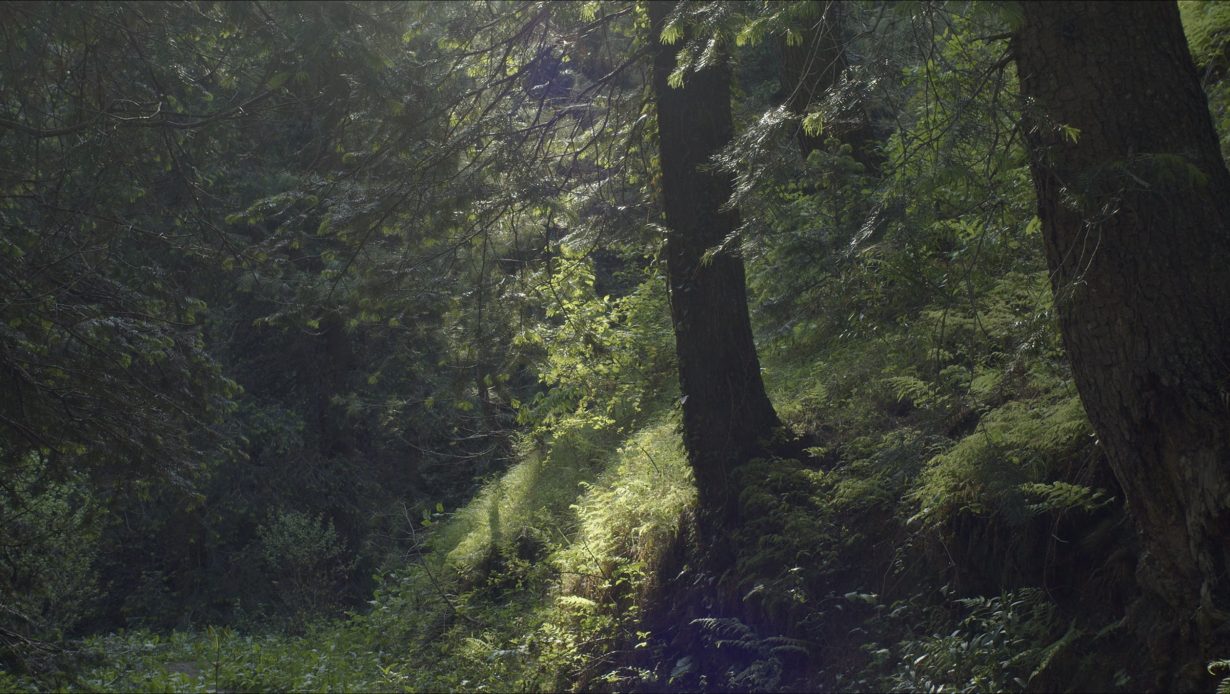
And to produce cherries, strawberries and raspberries for the overcooked colonists; a reminder that the lasting effects of colonisation are felt in the landscape itself as much as they are by inhabitants of those landscapes, and that colonial British, and their memories of home, are among the many ghosts that haunt these forests, from their roots up. The forests, the commentary points out, still provide cooling shade, but now it’s from the scorching heat of the metal roads that dissect them, roads that were then later put in place by the British. ‘The first thing that colonisers do everywhere is saw down trees, build straight roads right through sovereign wilderness,’ the video commentary reminds us. Visually we’re reminded that the modern equivalent is telecommunications towers, a concrete treescape briefly glimpsed, along with traces of the roads, in the video itself.
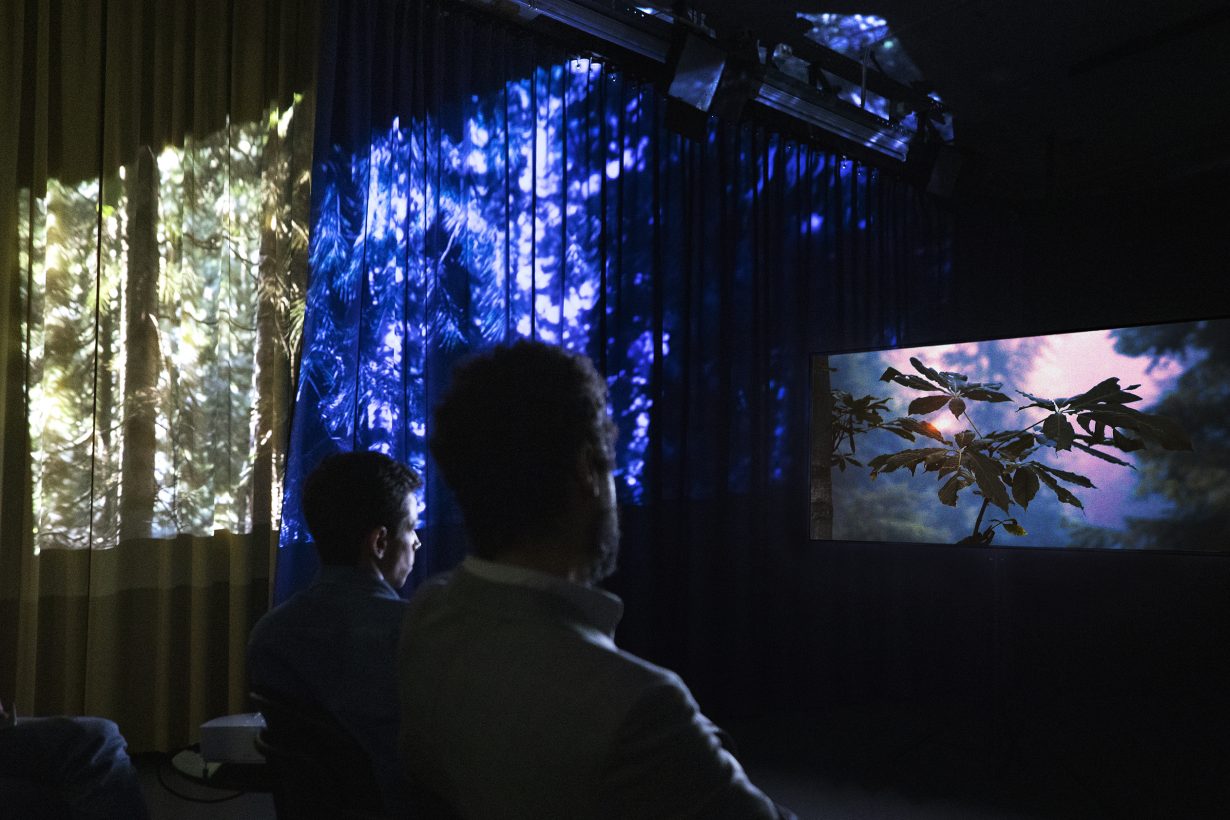
But language is not the primary vehicle through which Nabi seeks to connect audiences to the forest. “I wanted to move a bit outside of language,” she explains, “which is also why then to start with dreaming, to start with a syncing of energy. Because it starts with breathing and dreaming, this piece syncs with the temporalities of the forest.” At one point these temporalities are listed, as periods of climatic change or seasonal growth: monsoon time, lichen time and renewal time. As well as one unnatural one too: ‘tourist time’. We see footage of children picking and braiding daisies, stretching their arms, somewhat precariously, through barbed-wire fences (it’s unclear what they are supposed to keep out or keep in; as far as the video is concerned they’re just there) to grasp the white and yellow blooms, while the subtitles tell us that daisy season also marks the advent of snake season. As if, through word and image, to remind us that there is danger in pleasure, or that the natural cycle and the human cycle are not always in sync. For the artist, however, it’s also a moment of self-consciousness. “Yes, they’re taking all those flowers,” she explains when I mention that their weaving them into garlands and then selling them might be viewed as extractive, “but that’s different from cutting down a lot of trees to build a housing estate or to plough a road through or to really dig up a mountain because you want to put a hotel up there. All these things are happening, and then there’s this timber mafia that exists. I wanted to stay with those kids to also show that I’m not trying to be very puritan about it: I know that me going into the forest is also disrupting and disturbing things. I’m aware of that.” At other times the video presents the forest as home to a litter of discarded ceramics, a human-made trash heap. If part of the work, with scenes of the forest mists, is designed to take us into a leafy dreamworld, there are occasional reminders that this is only a dream.

The artist is equally realistic about the fact that viewers in Europe will feel at a certain remove from the landscape within which she invites them to immerse themselves, framing her work as a cue rather than a direct invitation. “I’m really aware that I’m filming these forests that are in Pakistan and these galleries or these museum spaces [where the work has been shown], they are all, so far, in Europe.” Versions of How to Love a Tree have been shown in the Netherlands, Germany and, soon, in Ukraine, as part of this year’s edition of the Pinchuk Art Centre’s Future Generation Art Prize in Kyiv. “Then I let go of this idea that I’m taking the viewer there, to that particular forest, and instead began to think about how I might bring people closer to forests that they know and are intimate with and that they hold in their memory, in their imagination. If I can talk about these forests that I know, maybe people can also go to the forests that they know.”
The desire to make connections between the human and nonhuman worlds is a feature of Nabi’s work. All That Perishes at the Edge of Land (2019) is a single-channel video by the artist ‘and the Gadani shipbreakers’. Gadani is where global trade and global dreams go to die. It’s the world’s third biggest shipbreaking yards, spanning 10km of beachfront, 40km northwest of Pakistan’s largest city, Karachi. Although the 30-minute duration of Nabi’s film may suggest it’s a little less than an epic work (by the standards of today’s feature films), it is a kind of Moby-Dick for the twenty-first century. Nabi’s film might be without the thrill of the chase, but it holds the novel’s fundamental uncertainty about precisely who is chasing who.
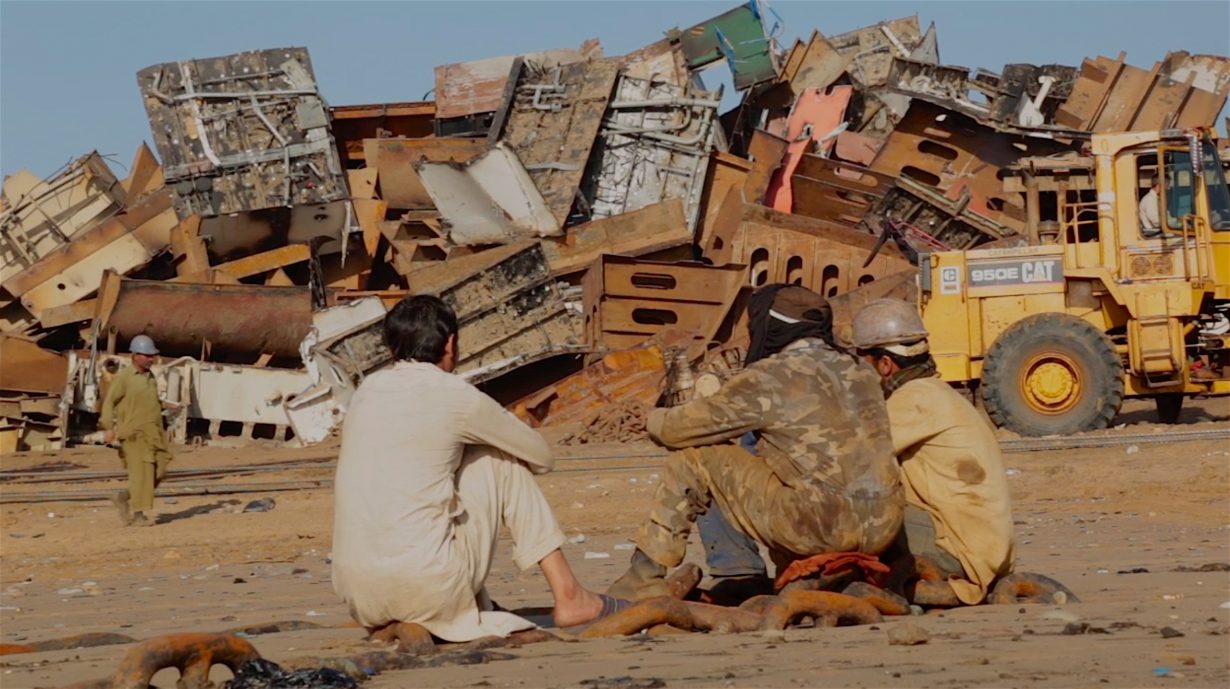
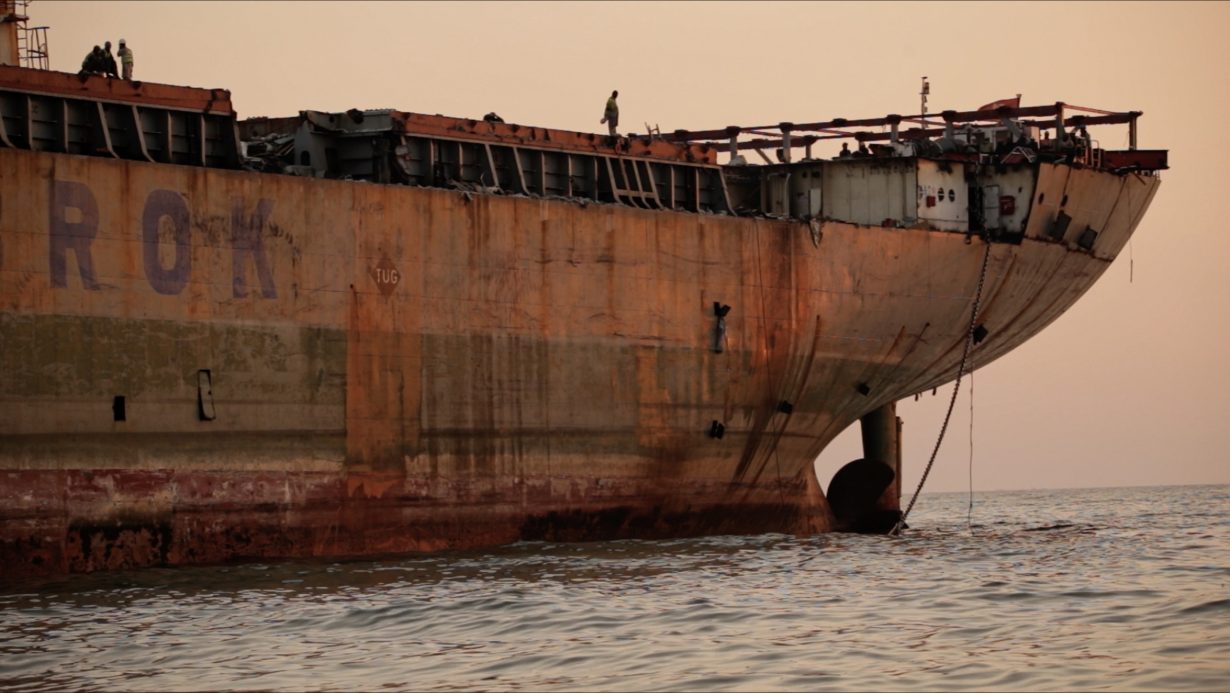
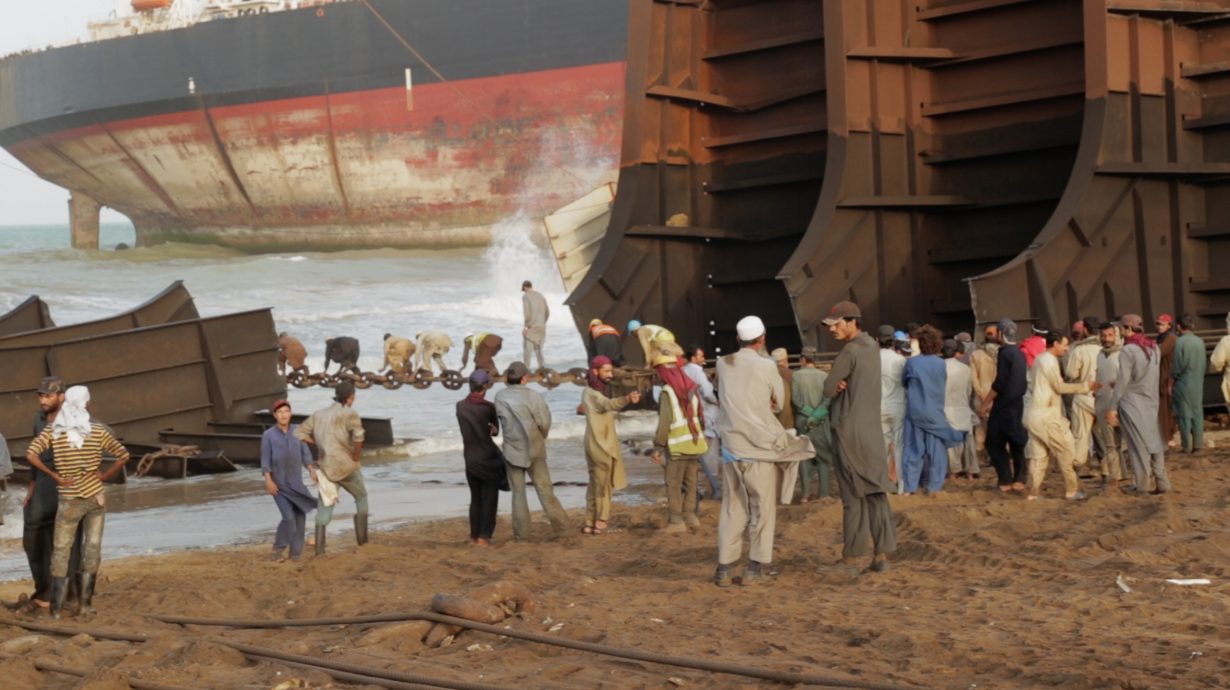
The video concerns the breakdown of a giant container ship, the Ocean Master, with the (audio) narrative conducted as a dialogue between it and the labourers engaged to tear it apart. The ship is dragged, by chains, to the shore, revealing its rusting hull, which is scored in a manner similar to the folds of skin on a rorqual whale’s lower half. What happens to it next is a form of flensing. The destruction of this metal behemoth is carried out by antlike labourers climbing wooden ladders, using tiny cutting torches and brute force, and leaving a lot of crumbled ruins to the sea. But as the ship speaks to the workers who are tearing it apart, it slowly becomes clear that this process of destruction is part of a cycle of extraction (the workers are extracting scrap metal and reusable components from the ship; the ship was moving goods made from extracted resources of the earth) that kills both machine and man. It becomes apparent as a mutually assured destruction, a symptom of globalised trade, postcolonial politics and an economic system that exists to keep some people eternally poor while making others increasingly wealthy.
The Ocean Master (its name, now that it’s beached, riddled with irony), we learn, was built in South Korea and latterly flagged to Panama. The Pakistani workers are convinced that they are performing their hazardous task out of a sense of national duty, to bring wealth to the impoverished economy of their country, while they barely receive enough money to subsist. Although they are equally aware that it’s not necessarily ‘the nation’ that is profiting the most. Rich economies export their trash to poorer economies (and project that they are somehow doing the latter a favour); ships in the shipping industry have ever shorter lifespans, as multinational companies chase profits. While the ship laments the death of its dreams of seeing the world, the workers lament the death of their dreams of making a living. And of course death itself is a factor too. At one point, the workers reference the explosion of the oil-production tanker Aces, at Gadani in 2016, which killed 31 and injured 58. When deconstruction recommenced a year later, authorised by the Pakistani government, another massive fire immediately broke out, as oil residues in the ship had still not been removed. Normally, it would have been dumped into the sea. The toxic materials onboard the ships have also killed o. the local fishing industry, further compelling locals to work the gig economy of destroying ships.
If it’s not oil residues coming for the workers, its asbestos from within the ship that will get them in the end – as the ship itself helpfully points out to them. Pollution, it would seem, is a common language of ships, fish and people. And people without money can’t a.ord to dream. “I some ways, I’m responding to the world around me, which I also see as becoming less hopeful and less optimistic,” the artist says.
Which brings us back to speaking to and dreaming with trees.
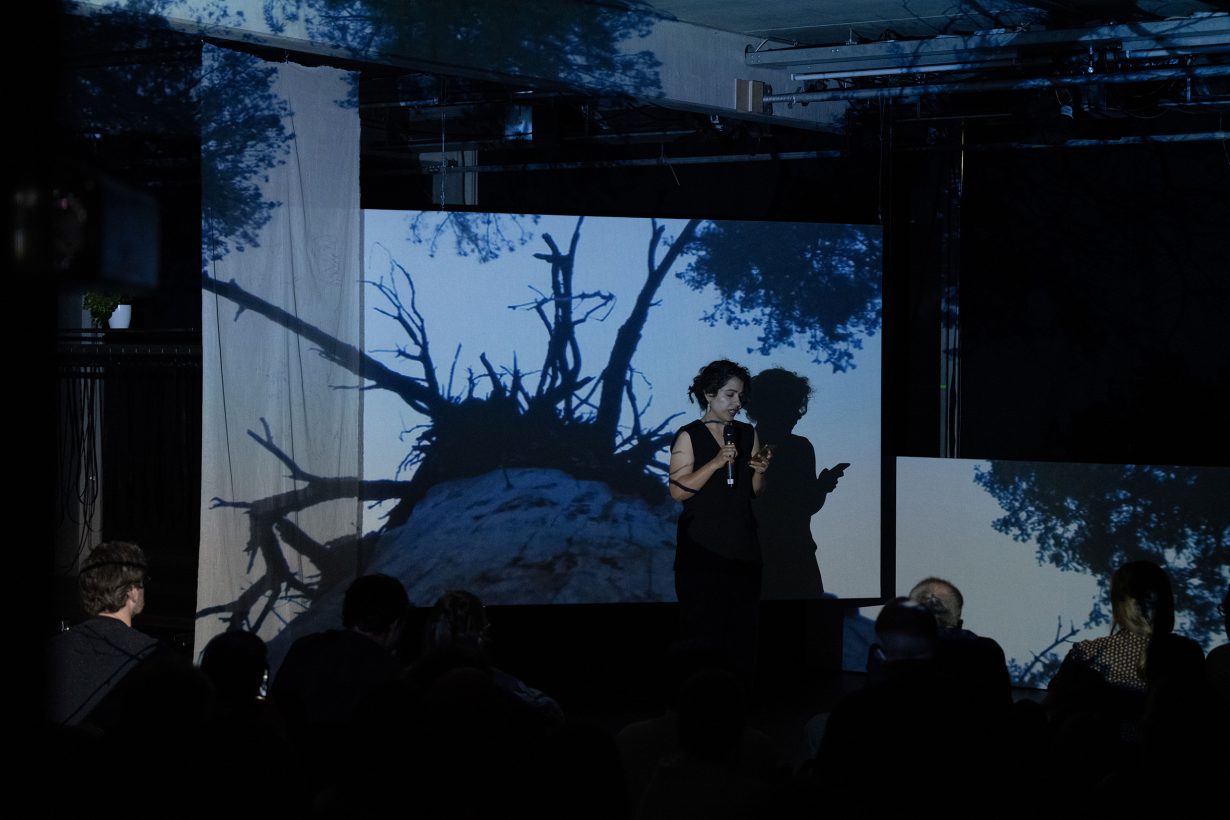
“Here’s the thing, [in the video narrative of Wild Encounters] there’s a bit of ambiguity where you don’t know if maybe those are the trees’ thoughts or the forest’s thoughts.” There’s a moment towards the end of the videowork when the subtitles repeat the refrain, ‘Your memory gets in the way of my history’, when you wonder if this is the singular speaking to the collective or the forest speaking to the human audience or vice versa. “I wanted to leave that there,” the artist continues. “I’ve spoken to people who told me about how they spent some nights in the forest, attuning themselves to a kind of consciousness and then hoping to allow the forest to dream through them. I haven’t done that myself but there are all these ways in which I know that people try to achieve or arrive at some intimacy or familiarity, to find yourself at a place where there can be this synchronicity, where there’s this osmosis.”
I wonder if that’s just a human delusion. People seeing or feeling what they want to see or feel.
“It can be,” Nabi replies, “but sometimes we also make possible things that we would like to see or like to happen. Those then can become quite real. I don’t have the science behind it. I’m not trained in botany or biology, which is why critical fabulation seems like a very necessary and urgent and lovely concept to play with and to move around with.”
The exhibition for the 7th edition of the Future Generation Art Prize is on view at Pinchuk Art Centre, Kyiv, from 4 October
